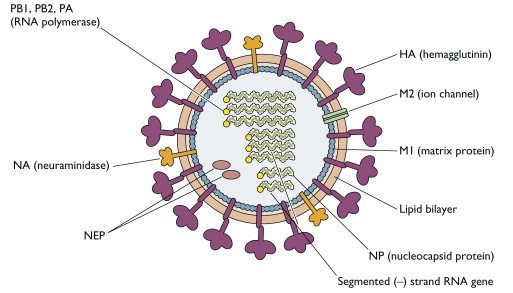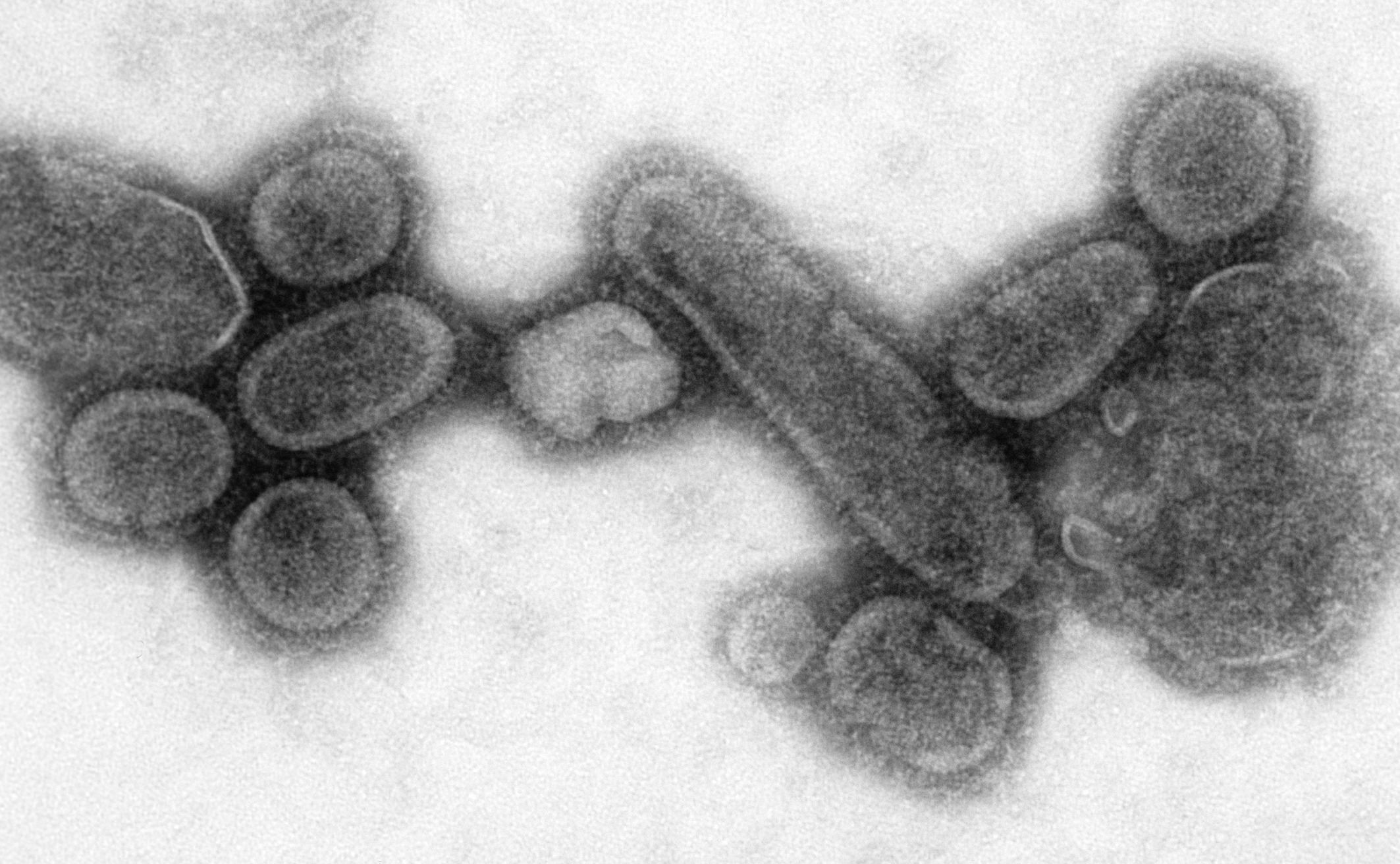A virus is a minute life form that can cause mild to brutal diseases in plants, animals, and humans. Examples of illnesses caused by viruses include something as simple as a cold to more complex and menacing such as AIDS. This is how small a virus is: Each virus is over a hundred times tinier than a germ cell while the germ cell is over ten times smaller than a single human cell. A human cell is ten times tinier than the width of your hair. Viruses are actually both alive and not alive. They do not have the capability to develop and reproduce by themselves. They have to penetrate an animal or human cell and invade the cell in order to reproduce. They can also invade and bacterial cells. They do not possess the proper physical properties required to continue to exist. They need host cells in order to breed and multiply. They can enter potential hosts from the surroundings or other hosts through openings in the skin such as the mouth, nose, and any types of break in the skin such as wounds. Viruses have done tremendous damages to human society and here is a list of the top ten most dangerous viruses of all time.
10. SARS

Photo Source: www.zerohedge.com
SARS attacks an individual’s respiratory system. It is caused by what is known as the Corona virus. Back in 2003, SARS had a major worldwide outbreak, and the bulk of the ones affected are in Asia that made as one of the most dangerous viruses in the world. Some of the indications that one has SARS are fever, headache, cough, and diarrhea. Approximately 2 out of every 10 afflicted with the disease die.
9. Bird Flu or Avian Influenza

Photo Source: thno.cl
Very common on birds, bird flu can infect humans via direct contact with the discharges of a bird that has been contaminated. Even though infection in humans is not common, the ones who have been infected have high chances of casualty. The indications that you may have bird flu are similar to the usual flu that attacks humans. Avian influenza outbreaks have been linked to a lot of deaths and illnesses in the continents of Africa, Asia, the Pacific, and Europe. There were bird flu outbreaks in the US in 1997 and 2005 making it as one of the most dangerous viruses in the world today.
8. Hong Kong Flu

Photo Source: photoresearch.beethomas.com
Hong Kong Flu has been the cause of death of over 1,000,000 people around the world back in 1968 and 69. It was caused by an H3N2 strain of the influenza A virus. After its disastrous stint in Asia, this flu strain reached the American West Coast in 1968. More than 500 individuals became very sick in a small town in California. And from there, the dangerous virus immediately spread to the other parts of the country.
7. Measles

Photo Source: www.turbosquid.com
Over the past one and a half century, more than two hundred million people have died around the world from the disease we know as measles. This most lethal virus caused by the organism called paramyxovirus, the disease attacks the respiratory system of its victims. Some of the symptoms include cough, fever, runny nose, and crimson eyes. Measles is extremely communicable and is transferred through breathing. 9 out of 10 people who have not obtained immunity and maintain consistent contact with people who have measles will be infected.
6. Ebola Virus

Photo Source: visualscience.ru
The lethal virus causes hemorrhagic fever. There are four identified types of Ebola viruses. Although the fatality caused by Ebola is no way near the ones caused by the previously mentioned viruses, being infected can be very dangerous to the victim. Full recovery will take months and there are no cures or any vaccines which can be used to treat this disease. Some of the symptoms of Ebola include vomiting, fever, malaise, diarrhea, and there are cases of internal bleeding. 8 to 0 out of 10 people infected would result to death brought about by organ failure.
5. Polio

Photo Source: picsbox.biz
Poliomyelitis, or sometimes called infantile paralysis, has caused more than 10,000 fatalities since 1916. Polio is a severe viral infection that can be transferred from one person to another through the mouth and the anus. Although 9 out of 10 infected individuals do not exhibit the symptoms brought about by the virus, some of those who have been infected may manifest a list of warning signs once the virus flows into the blood stream. When the dangerous virus finds its way into the body’s nervous system, it can tear down our motor neurons, and that would result to severe flaccid paralysis.
4. Asian Flu / Influenza A Virus

Photo Source: www.virology.ws
Back in 1957, Asian flu has been the cause of death of more than 4,000,000 people. Although there are no clear proofs, it may also have caused a human pandemic in the latter part of the 1800s. This lethal virus has its origin in China in the mid 50s. In total, almost 70,000 Americans and over 2 million people around the world are deemed to have met their demise because of Asian flu.
3. Spanish flu

Photo Source: commons.wikimedia.org
Towards the latter part of World War I, the Spanish flu wreaked havoc and obliterated roughly a third of world’s entire population. The pandemic was brought about by what is known as H1N1 virus, the very same kind which set off the swine flu plague 3 years ago that caused threat and panic to the people. This dangerous virus became a serious threat to the lives of the people in the latter part of 2009.
2. Smallpox

Photo Source: textbookofbacteriology.net
Tagged as one of the most dangerous viruses in human history, smallpox was finally wiped out in 1980 due to comprehensive universal inoculation campaigns. We may never know the number of people who died from smallpox. In the last century, the malady is has claimed 500 million lives. The contagious illness is caused by one of two viral strains, the Variola minor and the Variola major. It may have sprouted more than 10,000 years ago. In the 18th century, roughly half a million Europeans die every year and a lot more became blind. For every 10 infected people, 8 died.
1. HIV/AIDS

Photo Source: http://www.fpnp.net
HIV/AIDS came out in the 80s. up to now, it continues to affect more people. HIV means human immunodeficiency virus, and it is the most lethal virus that we still have not found the cure for. HIV forces the immune system to deteriorate which leaves it unable to fend off other ordinary diseases such as the common flu. It obliterates the body’s immunity cells up to a point where the body is incapable of battling other infections or diseases. When a person reaches this point, he already has full blown case of AIDS.
